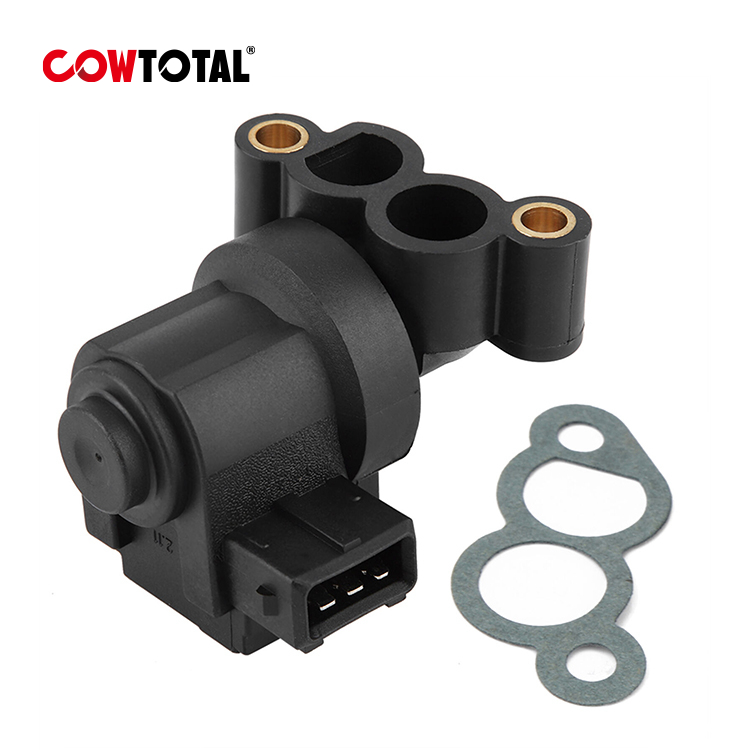This idle air control valve is important in regulating your vehicle's engine idle speed. This tiny yet vital component makes sure that your engine receives the correct quantity of air at low speeds or during idle conditions. Over time, the IAC valve can get dirty or wear down, affecting its ability to function properly. This can result in various symptoms such as uneven idling, stalling, or even difficulty starting your vehicle.
Knowing when to replace your IAC valve is essential for keeping your vehicle's performance and providing a pleasant driving experience. Regular maintenance and being aware of the signs that indicate a failing valve can save you from costly repairs down the road. In this article, we will discuss how often you should think about changing your idle air control valve and the elements that affect its lifespan.
Signs of a Failing Idle Air Control Valve
One of the primary signs that the idle air control valve is malfunctioning is characterized by fluctuating engine idle. You could see the engine varying between low and high RPMs, especially when at a stop or during idle. These fluctuations may be evident during ignition, and it fails to hold a steady idle. If it happens that the engine stalls upon stopping, this often indicates of a malfunctioning valve.
An additional sign is inadequate acceleration response. If you find that your vehicle hesitates or struggles to accelerate when you press the gas pedal, it might indicate an issue related to the idle air control valve. This can lead to a less responsive driving experience impacting overall vehicle performance. Additionally, you may hear strange noises, like abnormal engine noises, which may point to airflow regulation issues.
Also, you may encounter higher fuel consumption. Inefficient engine operation can result from a failing idle air control valve, which can lead to excessive fuel consumption. Should you find yourself refueling more frequently than normal, or observe reduced fuel economy, this could indicate that the valve requires servicing. These symptoms ought to encourage further investigation to avoid possible engine issues and ensure your vehicle runs smoothly.
Suggested Change Intervals
The IAC valve is a essential part in maintaining your vehicle's engine functionality. In general, it is advisable to change the idle air control valve approximately 50,000 to 100,000 miles driven, depending on your driving habits and the specific model of your car. Consistent maintenance and check-ups can help identify the condition of the IAC valve, which enables timely changes to prevent further engine issues.
If you notice signs such as variable idle speed, stalling, or difficulty starting, it may be time to evaluate the idle air control valve. These symptoms can suggest that the valve is no longer functioning correctly. Drivers in urban areas, with frequent stop-and-go traffic, may need to change the valve more frequently due to higher wear and tear.
Additionally, referring to your vehicle's owner manual can provide specific instructions on replacement intervals for the idle air control valve related to your brand and model. Staying informed and vigilant about this part can avert more costly repairs and ensure optimal engine functioning.
Impact on Vehicle Performance
A properly functioning idle air control valve is vital for ensuring peak engine performance. When this component functions properly, it regulates the level of air that flows past the throttle plate, ensuring that the engine runs steadily and responds effectively to acceleration. If the idle air control valve fails or gets obstructed, it can lead to unsteady idling, subpar throttle response, and even stalling. This not only impacts the driving experience but also causes unnecessary strain on additional engine components.
Furthermore consequence of a defective idle air control valve is lowered fuel efficiency. If the valve does not regulate airflow properly, the engine may run richer or leaner than necessary, leading to increased fuel consumption. This can increase operating costs and, in the future, may contribute to premature wear on the engine. Comprehending the importance of this component can enable drivers take proactive steps to care for their vehicles and escape financial setbacks.

Finally, ignoring the symptoms of a faulty idle air control valve can lead to more severe issues, such as damage to the engine or the emergence of other sensor-related problems. Handling the situation promptly by fixing the valve when needed ensures that the vehicle runs efficiently and prolongs its lifespan. Routine maintenance checks can assist detect any irregularities early on, permitting drivers to experience a more pleasant and more reliable ride.
